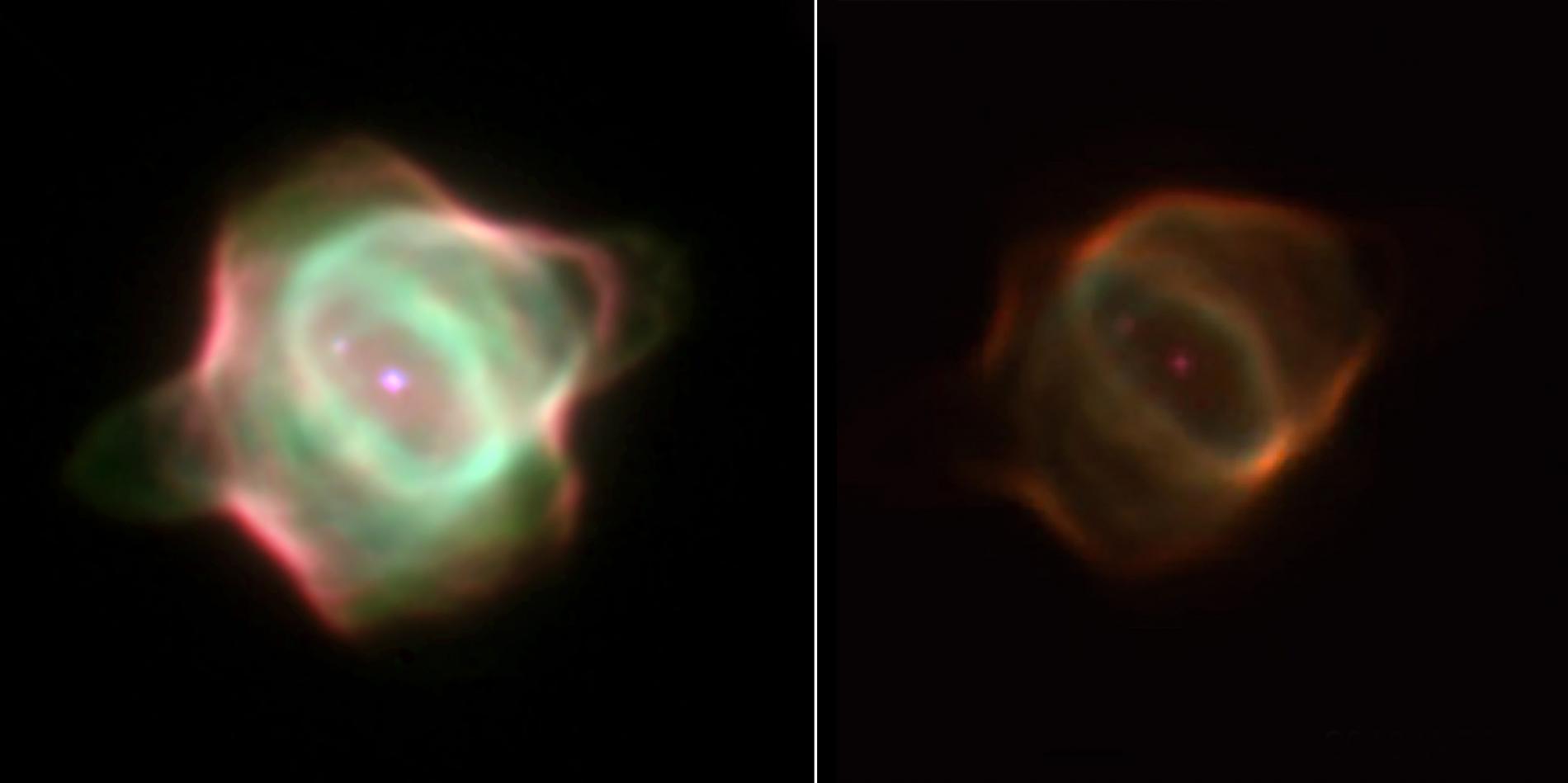The Stingray nebula, the youngest known, is fading
Observations with the Hubble Space Telescope show how this young nebula has lost its brightness and changed shape in just two decades
The life cycle of stars has time scales that may seem eternal: a star takes millions of years to be born, and its adult stage extends billions of years. If it is a star of low or intermediate mass, like the Sun, there will come a time when, having exhausted the hydrogen from the nucleus that serves as fuel, it will expand and expel its outer layers; and these, illuminated by the stellar nucleus, will give rise to a planetary nebula. These are very beautiful objects, which expand while dimming their brightness to end up fading in several tens of thousands of years. But a study reveals something unprecedented: in just two decades, the Stingray nebula has been extinguished.
The Stingray nebula, or Hen3-1357, was introduced as the youngest known planetary nebula in 1998: it was estimated that the core of the central star had only been producing enough energy for twenty years to ionize the gas envelope formed as a result of the expulsion of the outer layers. The data also showed that the central star had heated up faster than expected considering its low mass.
Its size is equivalent to one-tenth the usual dimensions of planetary nebulae, but the extravagances of this cosmic stingray don't end there: now, a work shows that Hen3-1357 has faded over the past two decades, and that the layers of gas surrounding the central star have lost sharpness.

"They are dramatic and strange changes," says Martín A. Guerrero, a researcher at the Institute of Astrophysics of Andalusia (IAA-CSIC) who is participating in the study. “We are witnessing the evolution of a nebula in real time, and we see variations in a few years. We have never seen this so clearly".
The comparison of the images obtained by the Hubble Space Telescope in 2016 and those obtained in 1996 (and that allowed, for the first time, to observe its shape) shows how the nebula has lost its brightness and changed shape. The fluorescent gas tentacles and filaments in the central regions have all but disappeared, and the curvilinear edges that suggested their association with stingrays have all but faded.
THE STAR THAT COOLED
Researchers have documented unprecedented changes in the light emitted by nitrogen, hydrogen and oxygen expelled by the dying star in the center of the nebula. The oxygen emission, in particular, dimmed in brightness by a factor of nearly a thousand between 1996 and 2016.
"You have seen changes in nebulae before, but what we have here are changes in the fundamental structure of the nebula -says Bruce Balick, a researcher at the University of Washington Seattle who is leading the research-. In most studies, the nebula usually gets bigger. Here, it’s fundamentally changing its shape and getting fainter, and doing so on an unprecedented time scale. Moreover, to our surprise, it’s not growing any larger. Indeed, the once-bright inner elliptical ring seems to be shrinking as it fades”.
Ground-based observations had shown signs of variability in brightness over time in other planetary nebulae, but these indications have not been confirmed until now. "Due to the optical stability of the Hubble Space Telescope, we are very, very sure that this nebula is changing in brightness over time. This is something that can only be confirmed with the visual acuity of Hubble", says Martín A. Guerrero (IAA-CSIC).
The researchers note that the nebula's rapid changes are a response to its central star, SAO 244567, whose surface temperature soared to 60,000 degrees, ten times the temperature of the Sun, in a short time between 1971 and 2002. Since then it has experienced a gradual descent to 22,000 degrees, so the star is unable to produce enough photons to keep the nebula ionized.
In 2016, a group of researchers proposed that this star would have experienced a helium flash, in which a helium-rich layer immediately under the stellar surface enters a sudden process of fusion, causing the expansion and cooling of the upper layers.
“These are very rare events in the last stages of stellar evolution, but they give rise to fascinating non-equilibrium processes in the ionization of a nebula, such as the one we were able to study in HuBi 1. It is a planetary nebula in an advanced recombination state because the gas has had more time to cool than in Hen3-1357. As for this, it is difficult to know what will be its final destination. Perhaps the central star will heat up again and ionize the nebula, or perhaps it never will and Hen3-1357 will turn into a failed planetary nebula”, concludes Martín A. Guerrero (IAA-CSIC).
B. Balick, M. A. Guerrero, G. Ramos-Larios. The Fall of the Youngest Planetary Nebula, Hen3-1357. Astrophysical Journal, Dec 2020. https://arxiv.org/abs/2009.01701
Instituto de Astrofísica de Andalucía (IAA-CSIC)
Unidad de Divulgación y Comunicación
Silbia López de Lacalle - sll[arroba]iaa.es - 958230676
https://www.iaa.csic.es
https://divulgacion.iaa.csic.es

